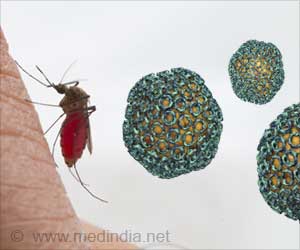The disease got its name even from its first discovery. The virus was first identified in 1931 while investigating the death of sheep on a farm in the Rift Valley of Kenya (
).
RVF virus is carried through mosquitoes, spreading it among domesticated animals and later to humans. People generally get infected through direct contact with blood, body fluids, or, tissues of infected animals, or bites from infected mosquitoes. It does not spread from person to person (
).
The RVF virus has an incubation period of 2 to 6 days following exposure and can cause several symptoms.
People infected either experience no detectable symptoms or develop a mild form of the disease characterized by a sudden onset of flu-like fever, muscle pain, joint pain, and headache. Some patients develop neck stiffness, sensitivity to light, loss of appetite, and vomiting.
While most human cases are relatively mild, a small percentage of people develop the following illnesses:
How to Treat Rift Valley Fever?
As most human cases are relatively mild and are of short duration, there is no specific treatment. For severe cases, the major treatment is general supportive therapy.
An inactivated vaccine has been developed for human use. However, this vaccine is not licensed and is not available for use. It has been used experimentally to protect veterinarians and laboratory staff from the risk of exposure to RVF. Other vaccines are still in the developmental stage.
What’s Latest Breakthrough?
A new study carried out by the US-based virologist by disrupting 20,000 normal genes using CRISPR technology has found that the RVF virus that enters human cells after a mosquito bite through a protein is normally involved in clearing low-density lipoproteins, that carry so-called ‘bad cholesterol’ from the blood (3✔ ✔Trusted Source
Rift Valley fever
Go to source
).
They also found that the virus failed to infect cells that lacked the gene for LDL receptor-related protein 1, or LRP1. This new finding can be used in the future to develop drugs against RVF and also for preventive vaccination to save human and animal lives.
How to Prevent?
The only way available to prevent RVF outbreaks in animals is by vaccination. Once an outbreak has occurred, animal vaccination should not be implemented because there is a high risk of intensifying the outbreak.
Restricting the movement of livestock may slow down the spread of the virus from infected to uninfected areas. Other things people should in keep in mind to prevent RVF infection are as follows (3✔ ✔Trusted Source
Rift Valley fever
Go to source) (4✔ ✔Trusted Source
Facts about Rift Valley fever
Go to source) :
-
Avoid contact with sick animals and meat or milk from sick animals. -
Wash your hands after touching raw meat or dairy. -
Cook meat thoroughly; boil raw milk. -
Report about ill livestock and unexpected deaths to the local veterinarian. -
Do not handle or bury dead livestock. Call the local veterinarian to dispose of the body correctly. -
Avoid mosquito bites by using long clothes, repellents, and bed nets.
However, creating more awareness about the risk factors of RVF infection and the protective measures individuals can take to prevent those risks are the most effective ways to reduce human infection and deaths. If not, it might become the next epidemic.
References:
- What is Rift Valley Fever?
– (https://www.cdc.gov/vhf/rvf/about.html) - Lrp1 is a host entry factor for Rift Valley fever virus
– (What is Rift Valley Fever?
) - Rift Valley fever
– (https://www.oie.int/en/disease/rift-valley-fever/) - Facts about Rift Valley fever
– (https://www.ecdc.europa.eu/en/rift-valley-fever/facts)
Source: Medindia



